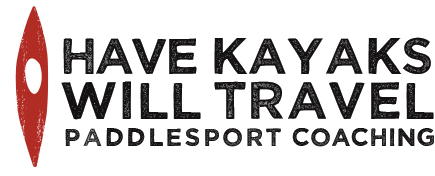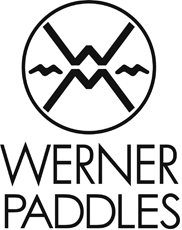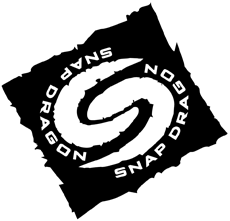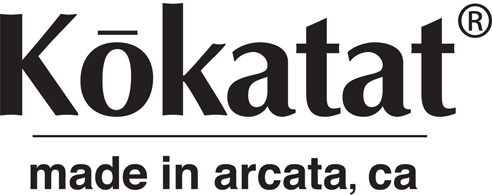Alec leads the group onto Section 3 of the Wolf River. We spent the past weekend at a staff retreat for Geneva Kayak instructors. We pitched our tents in a rustic site near Langlade, Wisconsin, and spent our days doing some swift water rescue training and some whitewater paddling on the beautiful Wolf River. Water levels were high, thanks to a combination of recent rain and snow melt. It was running at about 900 CFS, so many rocks lurked just beneath the surface. But at this level, it provided some nice waves, solid eddies and a lot of fun. Aaron paddles through Gilmore’s Mistake. At this time of year, there’s no question about dressing for the water temperature. It was essentially the same as the air temperature–about 40 degrees–and the wind made it feel cooler. But as long as we wore plenty of thermal layers and kept paddling, we stayed warm. Scott catches a wave. The same could not be said of the campsite, where it was difficult to stake our tents in some places because the ground was frozen and strong winds threatened to blow them away. Still, we managed to enjoy a campfire most nights and mornings and practiced tying bowlines and setting up Z-drags. When it wasn’t too windy, the campfire kept us warm. There’s a huge value to staff retreats. In addition to the training, they provide opportunities to build camaraderie. Haris, Paul and Greg at the campsite. Jeremy and Emily help prepare breakfast. Ryan picks blueberries. And for those of us who paddle sea kayaks more than whitewater boats, they provide an opportunity to have a steep learning curve once again. Sharon smiling–a look typical of all of...
Easter Sunday paddle, with a pleasant surprise
It was a cold and blustery day… Easter morning dawned overcast but seemingly calm, so we set our expectations accordingly. A 20-mile paddle starting on the South Side, past two of Chicago’s water intake cribs, with a stop for lunch at 12th Street Beach, and back again along the shoreline would be pleasant, a nice spring-time warm up for longer paddles to come. The sky was overcast and the water was calm as we left the harbor. And, in fact, the winds were a mere 10 to 12 knots–a Beaufort Force 3 to 4–and out of the north. Not enough to slow us down much, but enough to sustain waves of 2 to 3 feet that must have built the previous day, and to create scattered whitecaps. They weren’t apparent until we passed the break wall outside the harbor. “Ha,” we said. “This could be an interesting paddle after all!” Not that paddling isn’t always interesting, but calm water does tend to get more tedious than the bumpier varieties. Approaching the second crib. The trip out, cribs and all, took four hours. The last leg back took less than 90 minutes. Which goes to show that you never know what you’ll find until you get on the water. We had looked at the forecasts, the radar, the clouds and the wind speed (the forecast was 5 to 10 knots), and we thought the lake would be close to flat. And to our delight, we were...
Waves building on Lake Michigan
Last night, the wind began to blow out of the north, shifting to the northeast and then to the east at speeds of 20 to 30 knots. A low pressure system moves in, bringing wind and waves. Here on the southwest corner of Lake Michigan, that translates into considerable wave heights. Wind data from a water intake crib off shore. By noon today, the waves were surpassing the break walls and things were getting pretty chaotic. At Montrose Beach, one of the best surfing spots in Chicago, the waves were 5 to 7 feet, with clapotis in places adding a few more feet. If this front moves through as predicted, the wind should be out of the south tomorrow, and the waves should clean up and provide some good surfing, though the water temperature will still be in the low 40s. Local paddlers are already making plans to take advantage of this early-season surfing...
Getting up to date on First Aid and CPR
The American Canoe Association requires instructors to be certified in First Aid and CPR–a knowledge base that we’ve made use of on more than one occasion as coaches. In the past, we’ve taken the two-day Wilderness First Aid (WFA) course offered by Wilderness Medical Associates, and we’ve long been interested in the Wilderness Advanced First Aid and Wilderness First Responder courses. But with time and money as limiting factors, we haven’t yet managed to attain those certifications. With our WFA about to expire, we set up a one-day American Heart Association Heartsaver First Aid course with John Browning, an ACA Level 4 Sea instructor trainer, emergency medical technician, and instructor with both the American Heart Association and Wilderness Medical Associates. This set-up allowed John to tailor the usual Heartsaver curriculum to a class mainly comprised of kayak instructors, and to add some additional wilderness and paddling-related elements. Cap’n Browning, at the helm of the First Aid course. The Heartsaver curriculum is very urban in its orientation. It’s geared mainly toward workplace safety, and assumes a quick response from emergency personnel. By contrast, the WFA course is geared toward guides and outdoors enthusiasts on short trips away from civilization. So while the Heartsaver course emphasizes how to perform CPR (some of which recently changed) and how to staunch bleeding while waiting for emergency personnel to arrive, the WFA teaches participants how to evaluate and stabilize a victim far from help. The course was not without its surreal moments. It is taught with the help of a slick video featuring workplace and urban scenarios that are then repeated in a studio by sweatsuit-clad actors. Gloves, projector, action! Even the mannequins seemed sleepy after a full day in a small room. Zzzzzzzzz. There’s no question that staying current on First Aid is valuable, and we especially appreciated the additional outdoor content John provided. (His reading list alone was worth the price of admission!) But taking this course motivated us even more to get additional training in Wilderness First Aid, because most of the incidents we encounter happen...
Kent Ford comes to Yorkville!
Kent Ford. We just completed a three-day whitewater Instructor Development Workshop (IDW) with Kent Ford, one of the most respected instructor trainers in the country, who has competed and won titles in international whitewater slalom racing, coached the US Olympic kayak team, published books and produced videos about paddling technique and instruction, and continues to coach paddlers at every level. Despite all his credentials, experiences and accolades, Kent is a remarkably laid-back, open-minded guy. (Once again, we’re struck by the fact that most of the rock stars of the paddling world don’t let their prominence go to their heads.) The course was hosted by Geneva Kayak Center and taught at the new Yorkville whitewater park, where Geneva just opened its new paddle shop and instructional center. Kent, no stranger to whitewater teaching venues, was highly impressed by both the shop and the park. “It’s pretty darn amazing,” he told us. “It’s the most teaching-friendly of the whitewater parks I’ve been to, but there’s still plenty for a real strong intermediate or advanced paddler. It’s like five miles of class two river features jammed into 200 yards of city park.” We had visited the park earlier with our kids, who did find plenty to do with their considerable whitewater skills. This IDW was our opportunity to get some formal training on how to teach whitewater paddling, as well as some top-notch instruction and critique of our own skills. We’re still processing the experience, but some things are already clear to us: Coming from our sea kayak background, some aspects of whitewater technique are familiar and comfortable while others are foreign and awkward. Both the similarities and differences are valuable, and build our paddling skills. As we develop as coaches and paddlers, we realize that being knowledgeable and capable in various types of boats is essential to becoming graceful and skilled in any type of boat. Certainly, the coaches who impress us most with their technique tend to paddle more than one craft. Geneva Kayak Center is poised to transform paddling in the Chicago area by being located at this great venue and offering all sorts of training opportunities in canoe, whitewater kayak and sea kayak for students and instructors. They brought Kent Ford to Yorkville! We’re grateful for the opportunities they’ve provided and look forward to the ones to...
Fun with bodies, boats and blades
So that’s why they’re called performance boats! Just for the record, in case anyone was wondering, high-level sea kayak coaches know how to have fun, on the water and off. If we were in Great Britain, we’d likely have spent many hours in the pubs, being reminded that smaller paddlers can’t hold their liquor as well as large ones. Fortunately, we were on Orcas Island with a couple of coaches who enjoy playing on their boats. So we did, too. Leon comes in for a landing. Shawna takes standing on the boat to a new level of complexity. Interspersed with the fun–and often during it–we talked about the hows and whys of various techniques. The experience was true to the BCU approach, which incorporates games as an integral part of learning. We’re still processing the experience (and trying to get used to urban life again), but we know this: Shawna and Leon’s playful, inquisitive approach to sea kayaking is inspirational to us as paddlers and coaches, and we definitely plan to return when we...
Getting accustomed to the simple life
Making tea by the light of the rising sun. We’re accustomed to camping, but there’s something quite different and delightful about waking up in a building where candles provide all the light and a wood stove most of the heat. We boiled water on the Magic Chef stove for tea, and retrieved our soy milk from the cooler. The silence was more profound for the lack of appliance hum. No refrigerator, no furnace blower, just birds singing outside the windows.Shawna and Leon’s house was a short walk down a moss-covered path through a stand of trees, or along a wood-chip path that took us past their compost pile, organic garden and outdoor hot tub. Either way, we passed the whale-friendly lawn. We didn’t see any whales, but we’re sure that they would have approved. Over the hill and through the woods. The pesticide- and fertilizer-free lawn benefits creatures of the sea. The simple house is built of wood milled on Orcas Island, with a steel roof common to the area. When they don’t have visitors, Shawna and Leon are voracious morning-time readers. With no internet access in their house, they are able to satisfy their curiosity reading books and discussing what they’ve learned. It was a reminder to us of how distracted we are by our 24/7 access to the internet and the expectations of uninterrupted communication, which often prevent us from delving more deeply into topics of interest to us.We worked hard during the day. But that didn’t keep us–or them–from taking advantage of the beauty of the area. We were able to get out for walks as well as paddles, and it was clear that they had not lost track of how remarkable it is to live in an area with such natural appeal. A walk just outside of East Sound. A paddle to Obstruction Island offered opportunities to play in eddy lines and ferry across current. This little guy was hanging on by a thread. By the time we returned to our home in the barn, the sun had set and it was time to light the candles again. It’s a life we could get used to, and over the course of a week we started to feel as though we...
Arriving at Body Boat Blade International
Seattle’s Pike Street Market. We had only 24 hours in Seattle — just long enough to visit Snapdragon and Werner and wander around a bit in the historic Pike Place Market. On Thursday afternoon, Shawna Franklin and Leon Somme of Body Boat Blade picked us up in their canoe-topped car and we drove to Anacortes to catch the ferry to Orcas Island, where they and their business are based. Orcas Island is the largest of the San Juan Islands, located in northwest Washington state just east of Vancouver Island, Canada. Nearly 58 square miles with a year-round population of about 5000 people, Orcas is a quaint and quiet place where you can paddle in a full range of coastal conditions. It’s home to Moran State Park, with its mountain lakes, hiking trails and observation tower atop Mount Constitution. And it’s home to Body Boat Blade International, where we had come to work on a project with Shawna and Leon. Body Boat Blade International galactic headquarters. The small shop is well-stocked with high quality boats, paddles and gear. Shawna at the helm. Shawna and Leon have carved out an unconventional life here. By day, they offer a full range of instruction at all skill levels. But when they’re away from the shop and off the water, they live almost off the grid. They put us up in the apartment above the barn, where they lived while building their current house. The barn is filled with boats, not animals. After blowing out the candles, we fell asleep to the sound of wind blowing through the trees. Our temporary home, lit by candles inside and the rising moon...
Field trip day two: Werner Paddles
The Pacific Northwest is still home to many great paddlesports manufacturers, including several of our favorites. We couldn’t resist a visit to Werner Paddles, which have propelled us all over the Great Lakes, along parts of both coasts, and down several rivers and whitewater courses. The road to Werner. Even the drive there is beautiful, with snowy peaks in the distance and drive-through espresso shacks every few miles. At the recommendation of Werner rep Danny Mongno, we stopped at the Sultan Bakery, where we saw the largest “bear claws” ever. We recommend the apple-cinnamon muffins. You could easily drive by the Werner faculty without noticing it, not because it’s small but because it’s nondescript. Welcome to Werner. Inside we were greeted by Shannon Davis, who warmly welcomed us and handed us off to Keith Krueger, production manager, for a tour. Werner has spent decades perfecting its paddles and the procedures by which they are made, so understandably we were asked not to photograph the actual production processes. The surprise, for us, was how much of the process is still done by hand. Shannon in Customer Service. Keith, Production Manager, holding what will soon become a paddle blade. Werner employs about 50 people in this factory. During the winter, they build up inventory. In the spring, he says, “It just starts rocketing out the door.” Paddles, ready to “rocket out the door.” Stand-up paddling has been good for Werner. “The sport has taken off,” he notes, and Werner now offers several models of stand-up paddles. We walked through the process with him, from the making of straight and bent shafts (if you wonder why bend shafts are so much more expensive, here’s a quick fact: a worker can make 60 to 70 straight shafts in a day, but only 13 bent shafts), to the blade production area, to assembly, to finishing and quality control, to shipping. In parts of the factory, the workers wear ear protection, and in others they wear coveralls, but nearly everywhere they wear smiles. “It’s a great culture here and a fun industry and a cool end product,” Keith says. End of the line: Shipping. The women in customer service share that enthusiasm, and talk about the customer loyalty they see when people send a paddle in for a retrofit years or even decades after purchasing it. As loyal customers ourselves, we realize how easy it is to overlook the value doing...
Field trip to Snapdragon headquarters
We’ve long been fans of Snapdragon spray skirts. We still have our first skirts from years ago; they show their age, but still work well. Since then, we’ve purchased more Snapdragon skirts as our various boats with their many cockpit sizes have called for new ones. So when we had a one-day layover in Seattle, we decided to visit Richard Wilson, the founder and owner of Snapdragon Design, at Snapdragon World Headquarters. You are here! Snapdragon World Headquarters! OK, so it’s a small shop in an industrial strip mall, where five long-time employees and Richard himself produce about 5,000 to 8,000 skirts per year. The air smells like adhesive and neoprene, and the shelves are chock-a-block with the raw materials. This is hands-on, small-scale manufacturing of the most earnest and endearing sort. “We’re the small guys,” he says. The shop is small; every inch of space is in use. Richard began sewing skirts in the 1980s, when he got into paddling and couldn’t find a skirt he liked. He’s still at it, making skirts for whitewater and sea kayaks as well as new products for recreational boats. He also makes neoprene hatch covers and poagies. But the economy has taken a toll. Boat sales are down, and with them sales of spray skirts. The booming part of the paddling world–Stand-Up Paddling (SUP)–doesn’t require any neoprene. That’s been tough. “Right now, it’s about survival,” he says. That plus a commitment to avoid laying off any of his employees. Patterns hang behind a sewing station after the employees have left for the day. But look around the shop, and it’s just exciting. Richard is willing to make a custom skirt for just about any specific purpose. On one table, a couple of splash jackets are being retrofitted for integral spray skirts. On another, kevlar decks await their tubes. He’s also recently come out with a sun deck for warm-water paddlers who just want sun and splash protection, and a breathable fabric skirt–both with pockets. “We’re always building stuff,” he says. Skirts in the production process, with one of the seam-taping machines standing by. Richard is a living piece of paddling history in the Pacific Northwest. He has watched the business boom, from the 1970s, when he and his friends had to make their own boats, through the 1990s, when paddlesports were flourishing and business was booming, through today’s contraction. He’s still in business because he believes in quality and customer service. “We do everything here in our shop and we stand behind it,” he says. “If there’s ever issues we can deal with it, and we use the best possible materials.” Visiting Richard reminded us of what a small world kayaking...







